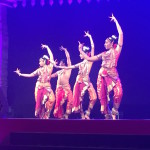India’s roads
Last month I travelled to Hyderabad for a roads conference. India has a population of around 1.25 billion, the average age will soon be 29, and personal motor vehicle ownership stats are exploding. The transport challenges are BIG.
Arriving in Hyderabad from Europe, you’re greeted with a mixture of the familiar and unfamiliar. The city’s airport, like most airports built in the last decade, is all grey stone and glass, high ceilings and people gathered at arrivals clutching bouquets of flowers or name signs. Throngs of white taxis swarm outside. No one is begging, there are no sad children; just lots of people wheeling suitcases behind them and fiddling with their smart phones.
Barely a mile from the airport things start to change. Smooth highways take you into otherplanetory landscapes outside Hyderabad, a Dali painting of empty space, huge boulders and half-built buildings. A toll area appears. Bumping over around 15 closely spaced speed bumps toward a pair of dusty old cubicles gives time for admiring half a dozen unfurled Saris, flapping from the top of the retaining wall in the breeze. Their ribbons of colour contrast with a bleak apartment building above that’s either coming or going.
Entering Hyderabad itself, the ultra-assertive, sardine-tight driving India is famous for hits you straight away. Vehicles fly past each other at speed with barely an inch between them, often bumping. It’s crazy, dangerous and weirdly efficient. You don’t want to be the guy in flip flops on the back of a moped if anything goes wrong, but for now he’s getting from A to B, maybe the only way he can afford. At a traffic light, a family of four, not a helmet among them, stop beside the car window on the back of a motorcycle. The mother carries a baby in one arm, wiggles open a bottle of water with the other and takes a swig.
India is one of the most culturally immersive places I’ve ever been. Food, clothing, sights, sounds, music, dancing, etc can have a wide variety of religious or regional influences, but are all so very Indian. A friend of my brother shepherded me around local sites, restaurants and markets and introduced me to the local biriyani. In the evenings, I was lucky enough to watch classical Indian kuchipudi dancing by world-renowned sisters Bhavana and Yamini Reddy (company pictured above), and a performance of Qawaali Sufi devotional music which is an entrancing, beautiful form. I even learned hollywood-style dance moves on stage at the concert of dreamboat Indian Idol winner Sreeram Chandra.
Such adventures aside, I was principally in India to attend a roads congress meeting. There is surely no better way to try and understand the challenges for India’s future of travel than being there and talking to Indians who work in transport. Today “On the World’s Wildest Road Trip: India” is published in full on Michelin Challenge Bibendum online. Please read it here if you have the time.




